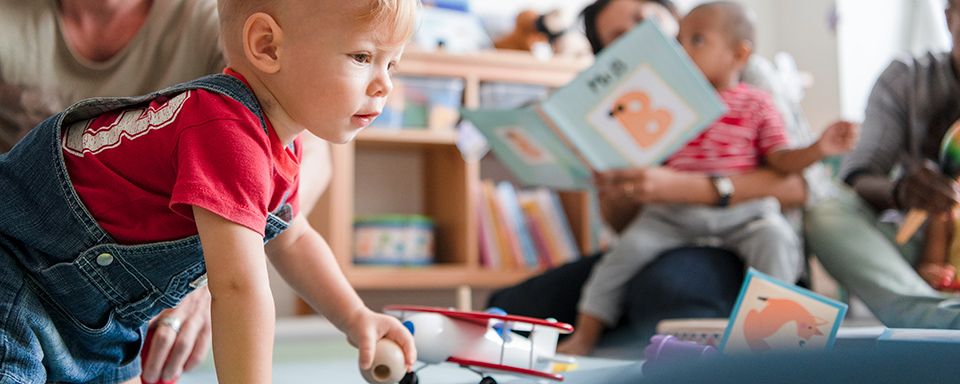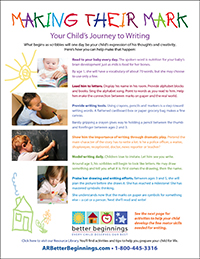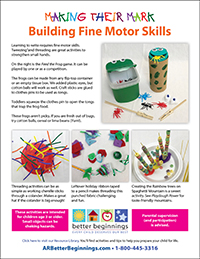Your Child’s Journey to Writing
What begins as scribbles will one day be your child’s expression of his thoughts and creativity.
Here’s how you can help make that happen:
Read to your baby every day. The spoken word is nutrition for your baby’s brain development just as milk is food for her bones.
By age 1, she will have a vocabulary of about 70 words, but she may choose to use only a few.
Lead him to letters. Display his name in his room. Provide alphabet blocks and books. Sing the alphabet song. Point to words as you read to him. Help him make the connection between marks on paper and the real world.
Provide writing tools. Using crayons, pencils and markers is a step toward writing words. A flattened cardboard box or paper grocery bag makes a fine canvas.
Barely gripping a crayon gives way to holding a pencil between the thumb and forefinger between ages 2 and 3.
Show him the importance of writing through dramatic play. Pretend the main character of the story has to write a lot. Is he a police officer, a waiter, shopkeeper, receptionist, doctor, news reporter or teacher?
Model writing daily. Children love to imitate. Let him see you write.
Around age 3, his scribbles will begin to look like letters. He may draw something and tell you what it is. First comes the drawing, then the name.
Praise her drawing and writing efforts. Between ages 3 and 5, she will plan the picture before she draws it. She has reached a milestone! She has mastered symbolic thinking.
She understands now that the marks on paper are symbols for something else – a cat or a person. Next she’ll read and write!
See the next page for activities to help your child develop the fine motor skills needed for writing.
Building Fine Motor Skills
These activities are intended for children age 3 or older. Small objects can be choking hazards. Parental supervision (and participation) is advised.
Learning to write requires fine motor skills. “Tweezing” and threading are great activities to strengthen small hands.
On the right is the Feed the Frog game. It can be played by one or as a competition.
The frogs can be made from any flip-top container or an empty tissue box. We added plastic eyes, but cotton balls will work as well. Craft sticks are glued to clothes pins to be used as tongs.
Toddlers squeeze the clothes pin to open the tongs that trap the frog food.
These frogs aren’t picky. If you are fresh out of bugs, try cotton balls, cereal or lima beans (Yum!).
Threading activities can be as simple as working chenille sticks through a colander. Makes a great hat if the colander is big enough!
Creating the Rainbow trees on Spaghetti Mountain is a sweet activity. See Playdough Power for taste-friendly mountains.









